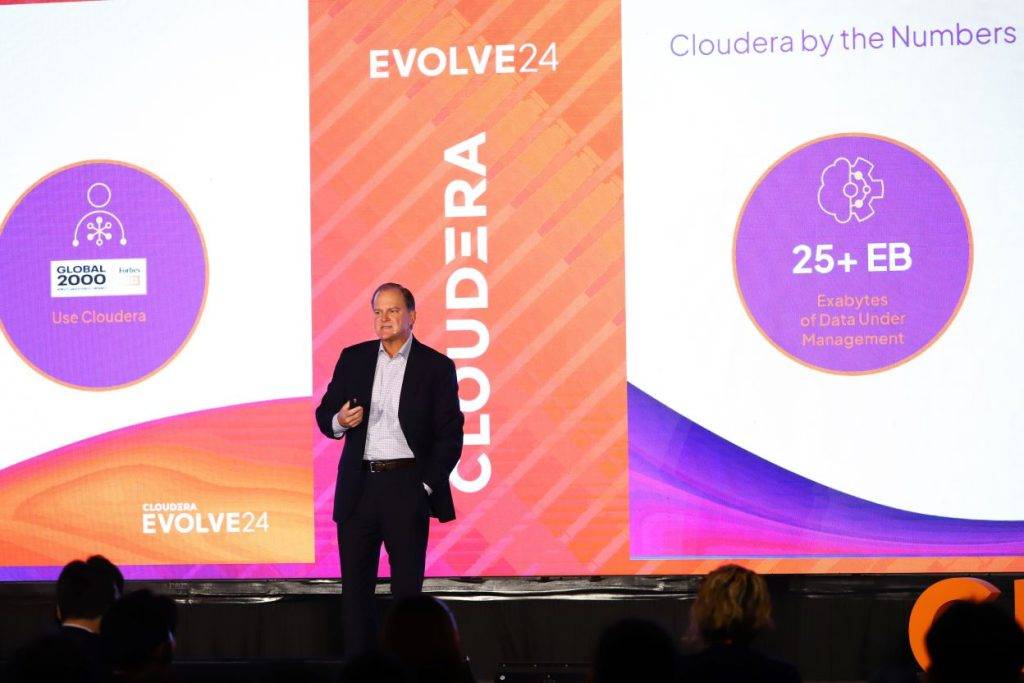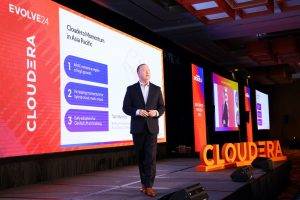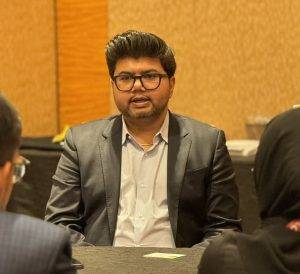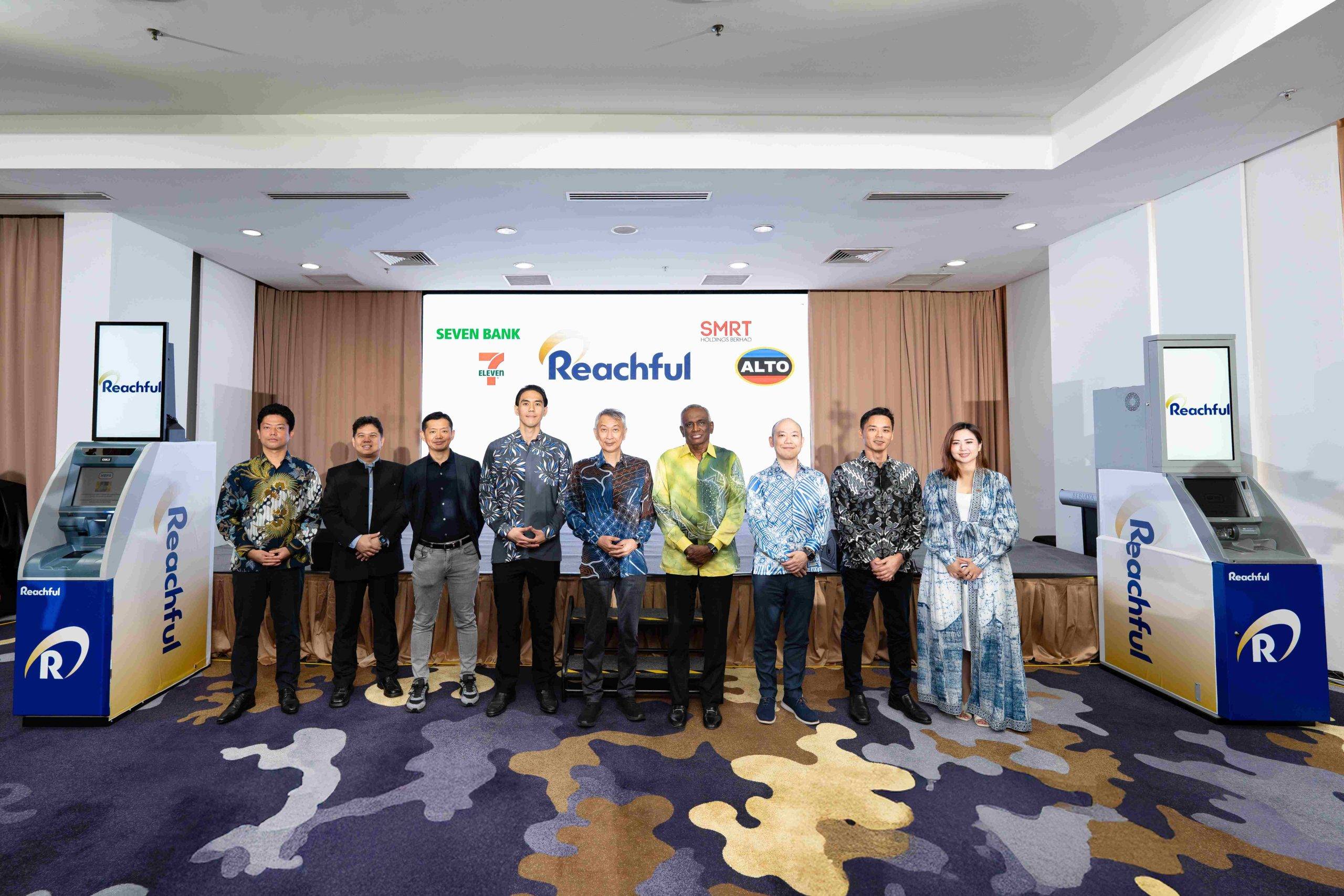After years of touting the benefits of hybrid – writing applications once and deploying them into any environment – AI is thrown into the mix. Only now, with current data architectures we may finally be closer to achieving true hybrid.
Cloudera, the data and AI company that handles 25 exabytes of data, currently as much as if not more than each global hyperscaler, recently held their annual data and AI conference, EVOLVE24 in APAC, in Singapore.

Charles Sansbury, CEO
The company’s C-suite like CEO, Charles Sansbury, Chief Strategy Officer, Abhas Ricky, and Frank O’ Dowd Chief Revenue Officer, are keen for customers to learn more about the company’s new products and capabilities especially around streaming, data lakehouse, and AI governance tools.

Frank O’Dowd, Chief Revenue Officer
The adjoining exhibition also allowed customers to deep dive into solutions specifically designed to accelerate enterprise AI in their respective organizations.
The new Cloudera – customer centric
In 2009, Cloudera had become the first commercial vendor of Hadoop, and could even be seen as facilitating the explosion in the use of big data analytics in the industry. But it was not too long before, new technology approaches were required.
Hadoop, once the cornerstone of big data processing now faces significant challenges related to performance, scalability, and maintenance.

Abhas Ricky, Chief Strategy Officer
Current workload demands require modern data architectures and during a group interview, Abhas Ricky quickly outlined how the organization has evolved from Hadoop to modern data lakehouses, as well as the data mesh and data fabric architectures.
Abhas reminisced, “People found it extremely expensive to extract everything and then load and transform (the ELT process). You want it to get to ELT and therefore the data lakehouse was born.”
After that it was the massive growth of hyperscalers that continued to drive the need for new application architectures, and then micro services, and other types of data services, as well as data mesh and enterprise AI.
“The volatility that you’re seeing out there is not impactful to us because we are insulated from it.”
“Lastly, in terms of enterprise AI, everything you heard today, is the market requirement. So, we have evolved with what our customers wanted but also what the open source community wanted. We have always been at the cutting edge of open source, and these were the market requirements,” Abhas said.
Investments, research and development
Charles also shared during his keynote that Cloudera has undergone significant change and talked about investments since 2021 into research and development to leverage cloud-based opportunities and accelerate the company’s AI capabilities.
“We are a large global software company. History-wise we kind of founded the big data movement about ten years ago. Since 2021 till today, we have spent about a billion dollars in research and development.”
During conversations with customers, Charles discovered that many have moved through their migration to CDP (Cloudera Data Platform), and “have been assessing next steps.”
Observing that some customers may not have as much familiarity with some recently developed products, he requested customers for this event to spend time learning about the products that were developed post-CDP.
Growth still, despite volatility
“The volatility that you’re seeing out there is not impactful to us because we are insulated from it.”
 According to Cloudera’s CEO, even with volatility in the markets, Cloudera is investing in the growth and expansion of its business.
According to Cloudera’s CEO, even with volatility in the markets, Cloudera is investing in the growth and expansion of its business.
A solid testament to this is the statement by Cloudera’s Chief Strategy Officer, who shared about Cloudera being the only company in the market today that can deliver any flavor of hybrid there is depending on the use case and industry.
Also, the organization supports various hybrid scenarios like public-to-private cloud migrations, bringing on-premises data to the cloud, or managing multi-environment setups across different cloud providers.
These capabilities are possible due to its use of containerization technology and also the close integration with Apache Iceberg, a cloud-native, high-performance open table format to organize analytic datasets on a file system or object store.
Innovating towards true hybrid and enterprise AI scale
The company recognizes that the cloud is critical to its success because customers demand being able to manage workloads flexibly across environments.
The true hybrid proposition from Cloudera enables its customers to seamlessly move data, metadata, and users and applications between on-premises and cloud environments without the need for expensive application refactoring.
One of the highlights of the keynote was when Adrien Chenailler, OCBC Head of Data Science, presented the bank’s journey of scaling enterprise AI, integrating it into core business processes, and the technical and business impact it has achieved as a result. In the space of a year, this winner of Cloudera’s Impact Awards in the AI Acceleration category has transitioned initial generic AI development to over 20 AI applications in production, and scaled AI processing to 75 million words a day.








